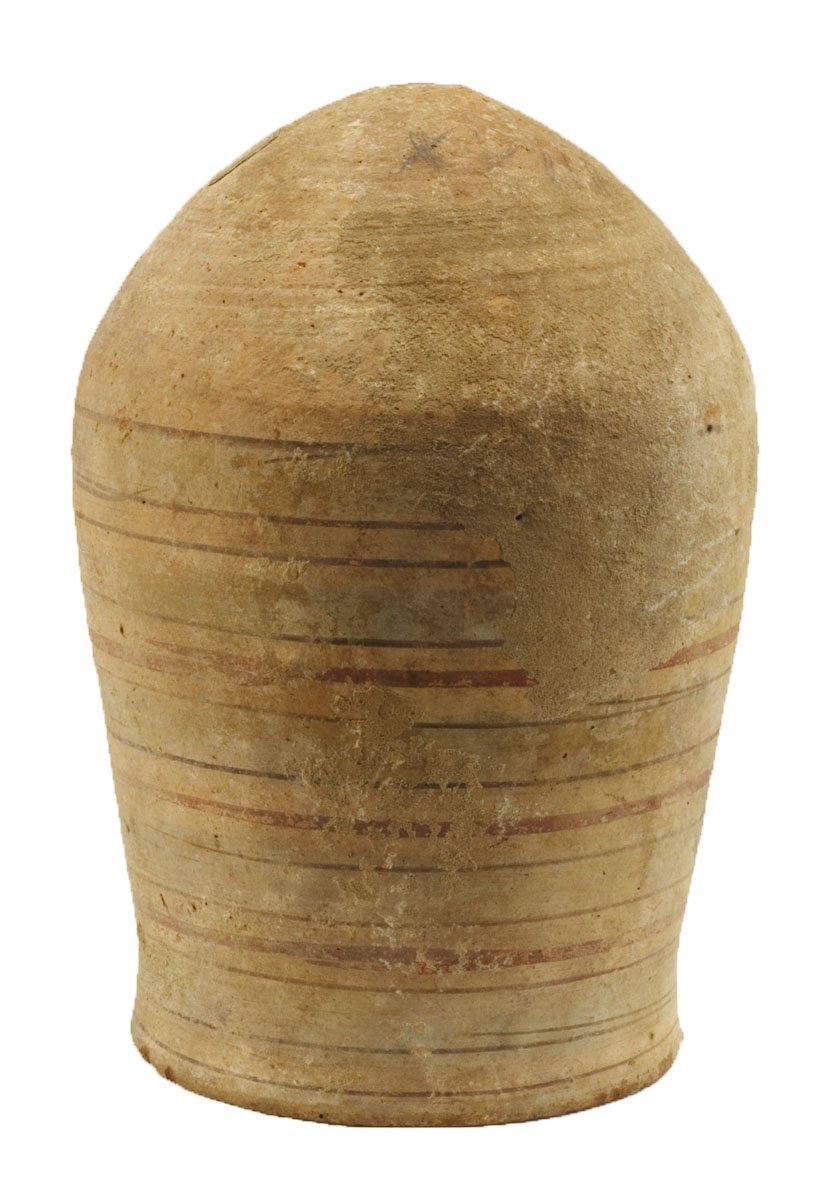
Piriform painted jar
Egyptian Art
| Place of production | Egypt (?) |
|---|---|
| Date | modern, 19th century AD (?) |
| Object type | statuette |
| Medium, technique | Wood, gessoed, painted |
| Dimensions | 11,3 × 5,6 × 7,6 cm |
| Inventory number | 51.2200 |
| Collection | Egyptian Art |
| On view | Museum of Fine Arts, Basement Floor, Ancient Egypt, Daily life |
This wooden figure is a forged artefact that represents a specific type of ancient Egyptian servant statuette, the scribe. Servant statuettes are known to have been grave goods typical of elite burials from the late Old Kingdom to the first half of the Middle Kingdom. Either as a single item, or arranged in groups, they served to evoke various working activities of everyday life, thus magically ensuring a continuous supply for the tomb owner in the afterlife, or at the same time they might have relieved the deceased from the labour obligations awaiting him in the hereafter. Small scribe figures first appeared in wooden granary models of the First Intermediate Period and became widely used in a range of inspectional scenes during the early Middle Kingdom. He may be spotted inside model workshops of different kinds, seated or crouching, carefully counting and meticulously jotting down the figures related to the flow of goods onto the writing board placed on his lap.
This characteristic posture is imitated by the Budapest statuette, whose body was carved from a single piece of wood, and his arms were attached to the torso with dowels. He owes his suggestive, observant look to his eyes, painted white and outlined in black. His right arm is raised and bent at the elbow; he once held a now-lost stylus (actually a substitute for a writing brush) between his index finger and thumb. A small writing board was attached with a wooden peg to the block-shaped base formed by the legs and the lower body, which was also supported from below by the figure’s left hand. Furthermore, a horizontal, deep incision at the height of the abdomen provided a perfect and secure fitting of the board. The writing board itself, with a fine hieratic inscription on its front side and a number of forger-painted clumsy, nonsense sign-imitations on its reverse, is in fact a fragment sawn out from a larger writing board of Middle Kingdom date. It has been detached from the statuette and enrolled into the museum register as a separate item (EGY_51.2197).
In order to lend the piece an ancient, worn look, the gesso-covered wooden statuette was painted ochre with patches of brick-red colour. However skilful its maker was, certain stylistic features, such as the bag-wig that leaves the earlobes exposed, the position of the left arm, or the clumsy signs on the back of the writing board, clearly indicate that the statuette is a modern forgery. It is also worth mentioning that the piece previously belonged to Sigmund Freud’s collection in Vienna. The closest parallels, two scribe statuettes evidently from the same forgery workshop, can still be seen at the Freud Museum, in London.
This record is subject to revision due to ongoing research.